
Are You 18 Or Over?
YesOr
No By clicking yes, you certify that you are over 18. By using this website, you agree to our legal disclaimer.605+ Cannabis Strains over 20 Breeders worldwide.
Table of Contents
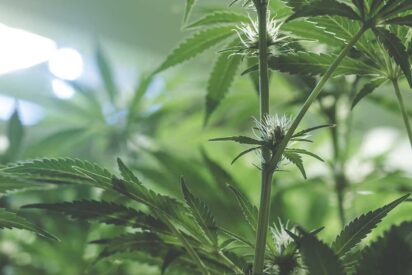
Many long-time marijuana breeders can tell you that having a male plant in your garden is bad for your overall yield. However, some may tell you that they are looking forward to having male plants in their grow space.
If this is your first time learning about cannabis plants having different sexes, you might be wondering how males are different from the female ones. Let us melt away your confusion by looking into the different genders of cannabis plants.
The main reason why breeders keep female plants in the garden is bud production. Males do not produce high inducing buds, except for pollen sacs.
In addition, the female plants are responsible for producing a specific strain’s cannabinoid content. You can find most cannabinoids in the female’s buds such as THC, CBD, and CBN. Good amounts of cannabinoids are also present in most part of a female plant such as the trichomes and sugar leaves. On the other hand, male plants barely produce the same amount of cannabinoids as its female counterpart.
It is important to note that all regular cannabis plants, counting autoflower versions as well, has a 50/50 chance of turning into a male or female plant. Regular seeds or the plants will barely have any identifying marks of its gender during the early parts of their growth cycle. Cannabis plants will show their sex organs during the first part of the flowering phase when they grow their reproductive parts.
You can find the plant’s reproductive parts on the joints of their stalks. Male plants will have a bulbous sac that is smooth and barely has any hair or pistils on them. On the other hand, female plants have bulbs with long pistils shooting out of its top and has hair sprouting around the pistil.
You might also come across a plant that will have both male and female sex organs. These type of plants are hermaphrodite that shares the same characteristics as male plants in terms of cannabinoid content.
It is possible to identify female and male plants during the vegetative stage. One of the defining characteristics of male plants is its thick central stalk while female plants have a thinner stalk. This is due to the traits of male plants reliance on the strength of its stalk to support its weight because they grow taller than female plants. Another trait that male plants have are branches with fewer leaves than female plants.
Identifying male and female plants during the vegetative phase can be difficult to achieve with the naked eye. In addition, cannabis plants have no average measurement on the thickness of male and female plant stalks. However, you can still use this information to mark the possible male plants within your garden and wait before they start to develop their sex organs during the flowering period.
It is important for you to identify a male plant as soon as they show their sex organs. The problem with allowing males to grow along with female plants is unintended fertilization. When a male pollinates a female plant, the female drops all of its chemical process in producing cannabinoids and sending it to its buds. Instead, the fertilized plants will focus on producing seeds within its bud. If you do not separate the male plants right away from your garden, you might be looking at a garden full of seed making plants and neither of them can give you the weed strain that you are working on.
The same rules also apply to hermaphrodite plants. Their pollens can also fertilize female plants and turn them into seed makers instead of bud producers. A good rule of thumb is to separate any plant that has a pollen sac from your main grow garden.
If your garden happens to produce a hermaphrodite plant, it may still produce a bud that contains the signature cannabinoid content of a strain. It is still important to take away a herm plant and place it in a separate area away from your main grow area.
Check on the flowering site of a herm plant. If it only has a few male organs, you can still harvest the plant. To do this, cut all male flowers with tweezers dipped in rubbing alcohol. Upon removing the flower, spray the area with water. This will sterilize the pollen within the site. Continue providing care to the plant until it produces a signature bud.
It is important to note that the bud may not have the same THC or cannabinoid content as the ones from female buds. With this in mind, you might not want to smoke the bud. What you can do with it is to extract the cannabinoid from the plant and use it for making hash or edibles.
While male plants may seem to be like a pest in any breeder’s garden, they still have their uses. The most common of which is seed production. This can be a big deal for many breeders due to the cost of seeds alone.
If you want to attempt making your own steady supply of Cannabis Seeds for a specific strain, cultivate the male plant and a female plant in a separate area or room. This area must be farther away from the bud-producing females to prevent any accidental fertilization. A good way to achieve this is to invest in a grow tent that creates a sealed environment for both male and female plants.
The cannabinoid content of a male plant can get you high a little bit if it comes from a potent strain that has an average THC level of up to 20 percent or more. This is possible by extracting the trichomes from the male plants. Trichomes are the small white substance surrounding the sugar leaves of cannabis plants. The trichomes become kief, which you can add to beverages or food to create an edible cannabis product.
If you are into juicing, male plants happen to have various nutrients and beneficial compounds. The plant contains cannabolic acids such as CBDA and THCA. While these chemicals do not provide the same effect as its high-inducing cannabinoid counterparts, they still have many health benefits. THCA, for example, has an anti-inflammatory and anti-tumor property. It can even provide mild relief for vomiting and nausea.
Finally, male plants can benefit your garden in a couple of ways. One of which is to utilize the natural terpene from the plant and apply it to your garden. Terpene is responsible for the smell and flavor of your cannabis buds. It can also be used as a natural and organic pest repellant when you apply it to your garden. You can extract the terpene oil from dried male plants.
Hermaphrodites are also usable for
While regular seeds can grow to a male or female plant, feminized seeds have a near 95 percent chance of growing into female plants. These seeds have the genetic code to become female because they came from two female parents. You can find a feminized version of popular seeds in online seed banks. On the other hand, you can make your own feminized seeds.
To make fem seeds, you need to make a hermaphrodite plant. Pollen from a female plant will have the genetics to produce a female seed. Creating a hermaphrodite is possible by applying colloidal silver to the plant, which will trigger a biological reaction to produce male organs. Colloidal silver is small amounts of silver floating within a water solution. You can easily find this substance across health and wellness shops since they are sold as supplements.
You will want to make sure that you are applying the substance to plants that are likely to be female. A good way to ensure this is to grow feminized seeds since these will likely grow female sex organs. You can also look for cannabis plants with thinner stalks as they also have a good chance of being female. It is also a good idea to pick a healthy female plant out of the lot to produce high-quality seeds.
Upon picking a female plant that will produce its pollen, place it in a separate area away from your garden. The main reason to do this is to prevent any unintentional fertilization of female plants that you want to produce your buds. Another reason is to avoid contaminating the bud producing plants with colloidal silver. The substance can be dangerous if you inhale or ingest it through the plant’s buds. Fortunately, the pollen from the hermaphrodite plant treated with the substance is safe to use.
Spray the colloidal silver onto the bud sites of female plants at the start of their flowering period. This is the time when the plants are entering the 12/12 lighting schedule. Apply the substance once a day for the first three to four weeks of the plant’s flowering period. You should see male pollen sacs growing out of the plant’s stalk joints during the second week. Continue spraying the colloidal silver on the plant until you see the pollen sac become inflated or looks ready to crack open.
Cover the pollen sac with a Ziploc bag and collect it if it looks like a swollen bulb. Allow the sac to dry so you can easily remove the pollen. Discard the hermaphrodite plant and place the female plant you want to produce seeds in a separate room. The female plant should be within its second to the third week of the flowering period. Apply the pollen onto the buds with a fine paintbrush. The pollen should stick to the bud site of the female plant. Within six weeks, the bud will swell and produce feminized seeds.
It is important to note that we want to use a chemically induced hermaphrodite plant only. Certain breeders find ways to force a female plant to grow male organs by intentionally stressing the plant. Others do this by not harvesting the buds of the plant and allow it to grow old. This will make the plant naturally grow male organs to protect the next generation. The reaction is a problem because you will gain a genetic that may not produce feminized seeds.
As you can see, hermaphrodites are as appealing as male plants because of their pollen sacs and low cannabinoid content. Even feminized seeds can turn into herm plants if it is constantly stressed throughout its growth cycle.
Plants can experience stress in many ways. The most common of which is from high temperatures. This common occurrence among indoor cultivators comes from the use of HPS or MH light fixtures. Both grow lights produce a significant amount of heat. You can avoid this problem by installing an efficient air ventilation system within the grow room that constantly keeps a comfortable temperature range for the plants. You can also use LED fixtures instead of HPS or MH fixtures. While LED cost more than other grow lights, the lamps do not produce large amounts of heat while turned on.
Diseases can also put a significant amount of stress among your cannabis plants. A good way to prevent this is to keep the humidity at a safe range. High humidity can create an environment for molds and fungus to grow. Each growth cycle has a suitable humidity level that benefits the plant. During the vegetative phase, a range of around 40 to 70 percent should keep the plants healthy and stress-free.
Another common source of stress among plants is nutrient deficiency and toxicity. A good practice is to use a medium with slow-releasing nutrients to provide the plants what it needs for healthy growth. It is important to keep watch for any signs of deficiencies such as yellowish hue among a plant’s leaves. The color indicates a lack of nitrogen.
You should have a clear idea on the differences between the male and female weed plants as well as hermaphrodites. Always remember to clear out any male or hermaphrodites from your main grow garden immediately when their gender becomes clear. If you still want to use either of the plants to create seeds, grow them in a separate room to avoid fertilizing all of your female plants. It is also important to know the proper cultivation method for any kind of cannabinoid strain to avoid stressing a plant and allow it to turn into a herm.
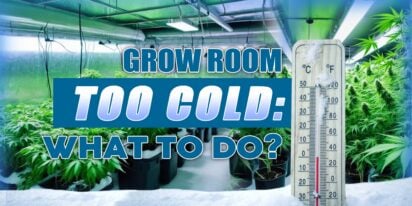
[ez-toc] In indoor gardening, maintaining an optimal temperature within your grow tent is crucial for the health and productivity of your plant

[ez-toc] Welcome to the delightful world of cannafudge crafting, where sweetness meets sophistication, and cannabis infusion adds a unique twis
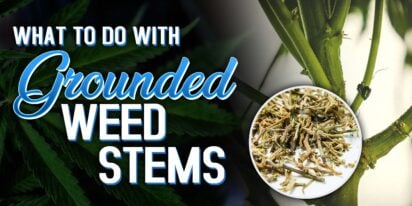
[ez-toc] You’ve finished trimming your weed, but what about those leftover stems? Don’t throw them away! These seemingly useless bits can a

Feeling high can be an exhilarating experience, but it's essential to make the most of it by engaging in activities that enhance the sensation a
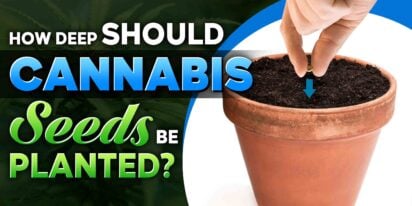
[ez-toc] Starting with planting cannabis seeds might seem simple, but how deep should cannabis seeds be planted for them to grow well. In this
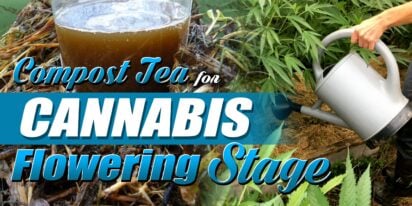
[ez-toc] In the realm of cultivating cannabis, maximizing growth during the flowering stage is a top priority for growers. While various method
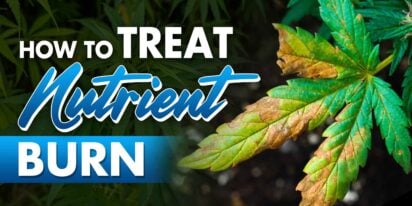
[ez-toc] Nutrient burn is a common issue among plant enthusiasts, often resulting from over-fertilization or improper nutrient application. It
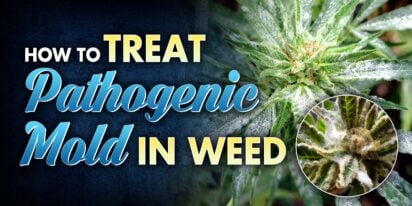
[ez-toc] Welcome to our complete guide to dealing with harmful pathogenic mold in cannabis. For those who grow cannabis, preventing mold is vit

In recent years, there has been speculation about “did Shakespeare smoke weed?” This idea originates from a study by South African anthropol
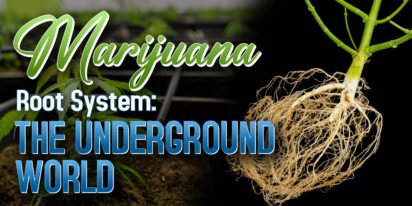
[ez-toc] Welcome to the hidden world beneath the soil – the inside of the marijuana root system. While the vibrant leaves and resinous flower

Are You 18 Or Over?
YesOr
No By clicking yes, you certify that you are over 18. By using this website, you agree to our legal disclaimer.